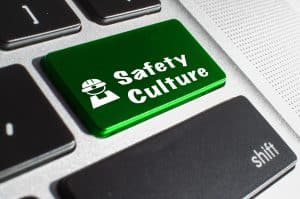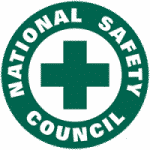The difference between safety culture and safety climate: A glimpse beneath the surface of your operation.
The first time the term safety culture appeared it was in a report written by the International Atomic Energy Agency following the Chernobyl disaster in 1986. The term was used to collectively describe the catastrophic failures in company-wide attitudes towards safety that were blamed for the disaster.
Since Chernobyl, the phrase safety culture has become part of the safety industry’s vernacular but what exactly does the term mean? Even now in 2017, there is still no universally agreed definition and what does it actually measures.
To make it even more confusing, occasionally the phrase sometimes morphs from safety cultures to safety climate depending on what you are reading, often within the same paragraph. Understandably, most people assume both terms mean the same thing even though they are fundamentally different.
 Safety Culture versus Safety Climate
Safety Culture versus Safety Climate
Safety culture is like any other culture, think of American or British culture for example. In general, the culture is shaped by rules, beliefs, superstitions, ethics, and codes of conduct concerning what they find acceptable and unacceptable. All of which is based around a shared moral sense that is learned from an early age. These cultures are made up of subcultures, but the collective consensus subtly shapes the people and their behavior.
Safety culture is all of those things but specifically focuses on how safety is thought about within an organization and whether it is ultimately made a priority.
The safety climate is the current mood, for lack of a better word. Going back to our modern day culture, consider how the mood in your office changes when your city’s NFL team goes to the Super Bowl, or even when the sun comes out on a Spring day. Compare that to the mood during news of political scandals, recession, or long cold winters. The underlying culture is still exactly the same, but the climate, or mood shifts in a fundamentally and dynamic way.
Good Versus Bad Safety Culture
When people talk about safety culture, it tends to be in terms of poor safety culture or good safety culture. A poor safety culture exists is an organization where safety does not come first. Maybe safety is always trumped by profit, a collective blind eye is turned to dangerous behavior or where peer pressure leads to unwilling participation in corner-cutting and risky behavior.
A good safety culture is one that puts safety first at all times, trains staff, has built-in procedures and encourages trust, open dialogue and shared responsibility (among other things). Inevitably the people working within that framework adopt those principles and know that their supervisors and managers really care about keeping them safe.
What Does Safety Climate Tell Us?
The safety climate in an organization is a direct reflection of the health of the safety culture. It tells you everything you need to know in order to tighten your safety operations and reduce vulnerability to preventable accidents and losses.
The safety climate is a fickle creature and is hugely influenced by recent events. If safety equipment is replaced with shiny new model, or safety training is updated for example, there will be a positive effect on the safety climate felt by all. An accident, or a cheap, temporary fix on equipment will have the opposite effect on the safety climate. However, if the underlying safety culture is a good one, then the climate will bounce back to its former good self, following any deviations.
Why is this important – well, because the way we feel is an absolute precursor to how we act and the decisions we make – get the climate right (by creating a good culture and being consistent) and actions will follow.
Do you have a clear picture of the safety culture and climate within your operation? If not, then you really should find out.
Contact Circle Safety & Health Consultants and ask about Safety Culture Survey to find out exactly what your operation’s safety culture is like and how to make it even better.
You may be surprised by the results, study after study shows managers perceive the safety climate much rosier than their staff. That kind of disconnect it what often leads to a poor safety culture and accidents which could easily have been avoided.
Our Deal With It®! training can help you negotiate and re-build the sometimes wobbly bridge between culture and climate and make sure everyone is on the same page when it comes to safety. This training delivers a wide range of innovative safety courses which are cost-effective and life-changing. We offer tailored and bespoke safety training suitable for all levels – from the board room to the shop floor, for all industries and business sectors.
Deal With It®! courses have improved the safety culture and behavior of more than 120,000 people across the world over the last decade. Hundreds of organizations are now working more safely – thanks to our powerful, unique training and consultancy advice.









